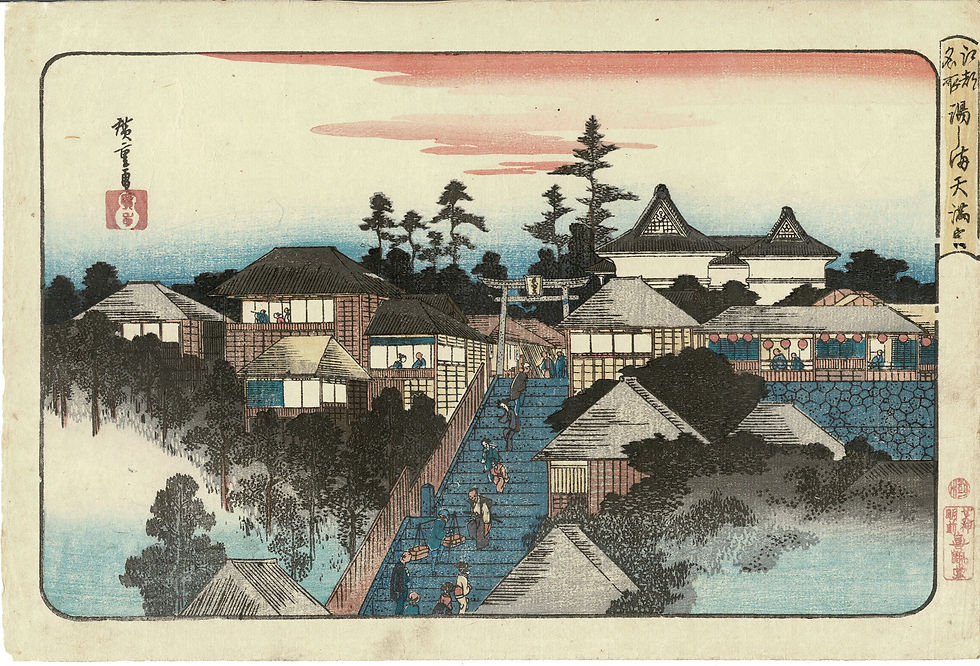A young woman washes strips of clothing in a stream. An early ukiyo-e example executed in the "benigirai" style, or "red avoiding", a woodblock printing technique pioneered by Shunman, Eishi, and Shuncho. A rare design belonging to a set of six prints (hexaptych) titled "The Noda Jewel River", a hexaptych depicting young women, girls, and young men representing the Six Crystal (Tama) Rivers or the Six Jewel Rivers.
Artist: Kubo Shunman (1757-1820)
Signed & sealed: Shunman
Publisher: Fushimiya Zenroku
Date: c 1776-1794
Format: Oban; Woodblock print, ink and color on paper (benigirai style)
Fine impression, color, and condition. “Considered one of Shunman's masterpieces and one of the best early ukiyo-e examples from the 18th century.” courtesy of Richard Kruml, Japanese prints London)
Shunman - Young women washing strips of cloth, The Noda Jewel River
Also known as Kubo Toshimitsu, Shumman, Shunman, Yasubei, Issetsu Senjô (Hitofushi Chizue), Shumman (Shunman), Kubota Toshimitsu, Kôzandô, Nandaka Shiran, Sashôdô, Shôsadô, Hitofushi
"Among surimono designers, Kubo Shunman 窪俊満 (1757-1820) stands out for his varied talents as a kyōka poet, a painter, a print designer, an engraver and a lacquer artist. For several years around the turn of the century he headed the Hakuraku poetry circle. Though his father died when he was young and Shunman (given name: Kubota Yasubei) was raised by an uncle, he seems to have been most strongly influenced by his grandfather, Kubota Masaharu (1700-ca. 1774), a painter and lacquer craftsman by profession, who was also a scholar of Kokugaku (National Learning) studies.
In the late 1760s, the young Shunman was introduced to Katori Nahiko (1723-82), who initiated him in painting, poetry and scholarship a integrated arts, not separate pursuits. Whereas Shunman imbibed the rarefied aesthetics of Nanga and Kanō painting themes from Nahiko, in the realm of ukiyo-e he studied under Kitao Shigemasa, though like many other print artists of the time he fell under the sway of the Kiyonaga bijinga style. Shunman 春満 was assigned his name, written with characters meaning 'spring abundance', by Nabiko. Concerned that people would mistake him for a pupil of Katsukawa Shunshō, after Nabiko's death in 1782 Shunman started writing Shun with a different character, one meaning 'genius'. He often signed himself Shōsadō 尚左堂, Studio of the Left, since he was left-handed.
It seems he operated a surimono production studio that produced prints for his own commissions and those of other artists, and it is thought he may have sometimes done the engraving and printing himself."
Reading Surimono. The Interplay of Text and Image in Japanese Prints, edited by John Carpenter, 2008, p. 382.






























